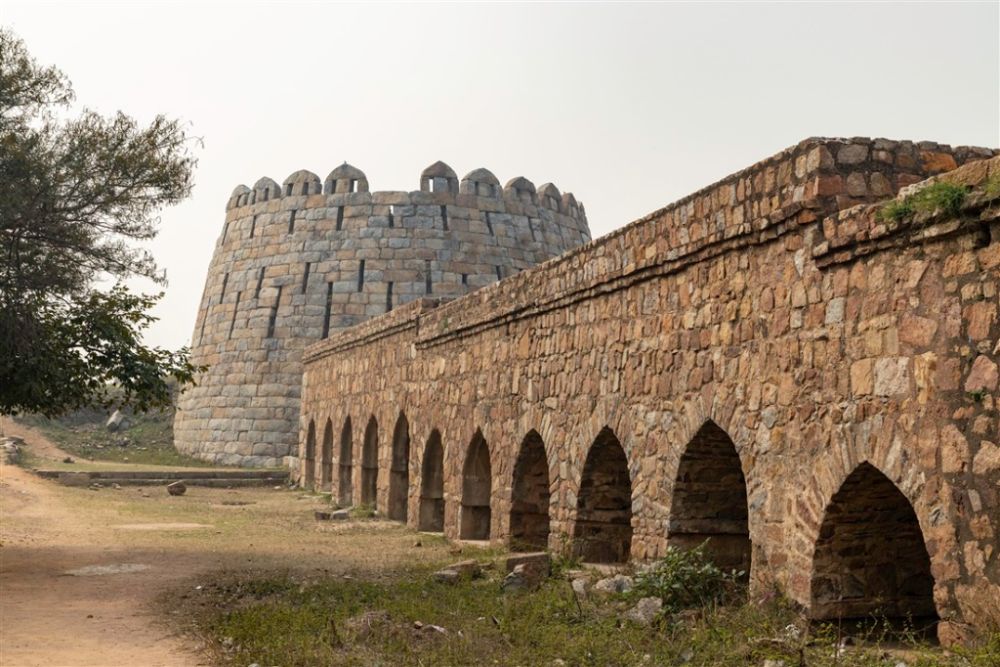

Tughlaqabad Fort, a ruined fort in Delhi, India, is a significant relic of the Tughlaq dynasty. It was constructed under the orders of Ghiyas-ud-din Tughlaq, the founder of the Tughlaq dynasty in 1321 AD. The fort symbolizes the short-lived might of the Tughlaq empire and is an important architectural and historical site for visitors interested in Delhi's sultanate period.
Tourism at Tughlaqabad Fort has gradually developed over the years. The site has long been a point of fascination for historians and tourists alike due to its grand scale and the advanced urban planning for its time, which included the fort's intricate water supply system. The fort has seen a steady increase in tourism as India has emphasized preserving and promoting its historical landmarks.
One of the most intriguing aspects of Tughlaqabad Fort is its sophisticated water supply system. The fort was strategically built near the Ghiyas-ud-din Tughlaq's tomb, connected by a causeway, to ensure the availability of water. The fort had several reservoirs and tanks, which were part of a well-thought-out network to collect and conserve rainwater. The fort's remarkable engineering provided resilience against the hot and dry climate of the region and is considered a highlight of the site's ingenuity.
In recent years, there have been concerted efforts to conserve and restore Tughlaqabad Fort, including its water supply system. These efforts are aimed at protecting this historical treasure while enriching the learning experience for tourists. The Archaeological Survey of India has undertaken multiple projects to preserve the structural integrity of the fort and its ancillary systems.
India has seen a shift in tourism trends showing increased interest in historical and educational travel. Tourists are not only seeking out picturesque landscapes but are also eager to learn about the history and culture of places like Tughlaqabad Fort. Virtual reality tours, informative mobile applications, and interactive exhibits are becoming popular ways to enrich the visitor experience at historical sites, offering a peek into the past with the convenience of modern technology.
Despite its dilapidated condition, Tughlaqabad Fort continues to attract visitors from around the world. Tourists can walk through the battlements and explore the remains of the once-grand palaces, mosques, and granaries. Informational signage and guided tours provide insights into the ancient water supply system and the fort's overall design. Tourists are advised to visit during cooler months to fully enjoy the expansive ruins and to attend the light and sound show conducted here, which narrates the history of the site.